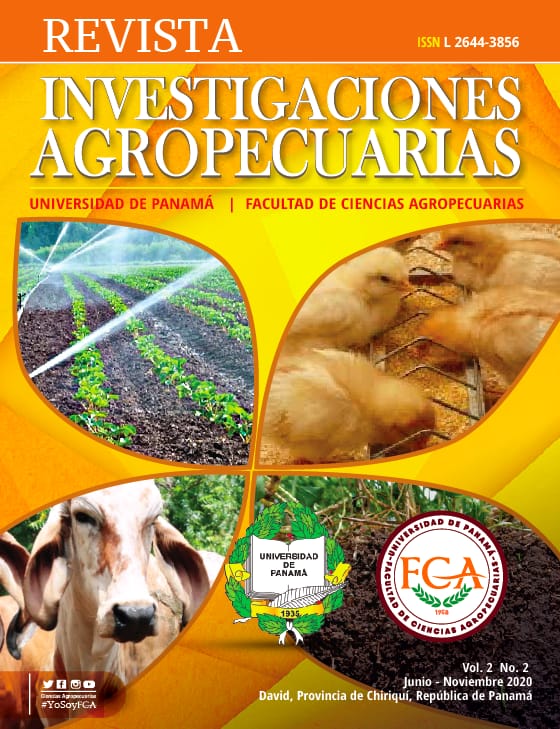

The cultivation of corn and rice are very important for the country, due to the high consumption of these items. Currently, climate change has led to the implementation of irrigation systems to produce and avoid losses. In this context, this study aimed to determine the needs of rice and corn cultivation in the dry season (January-May). For this, it is necessary to calculate the irrigation needs, using the Penman-Monteith equation (recommended by FAO) which is used to calculate evapotranspiration of the Reference crop (ETo) and then obtain the evapotranspiration of the crop (Etc).
These irrigation requirements were obtained using the CROPWAT Software using data from two agrometeorological stations (ETESA and FCA Chiriquí). The rice crop irrigation requirements, for a 50 % probability of occurrence of ETo and precipitation, in ETESA results in lower values in January and higher in March (0.31 and 0.81 l s-1 ha-1, respectively). In the FCA, values from 0.30 to 0.70 l. s-1 ha-1 were found. With respect to corn, the results indicate a minimum flow of 0.09 and a maximum of 0.70 l s-1 ha-1 for ETESA; and for the FCA the allocation for corn was 0.08 and 0.68 l s-1 ha-1. These results suggest that in order to establish rice and corn crops in the dry season it will be necessary to irrigate the crops since precipitation is not enough to supply them.